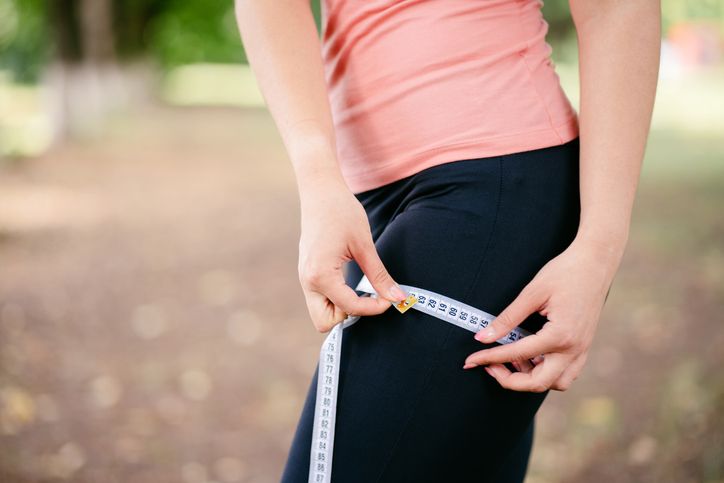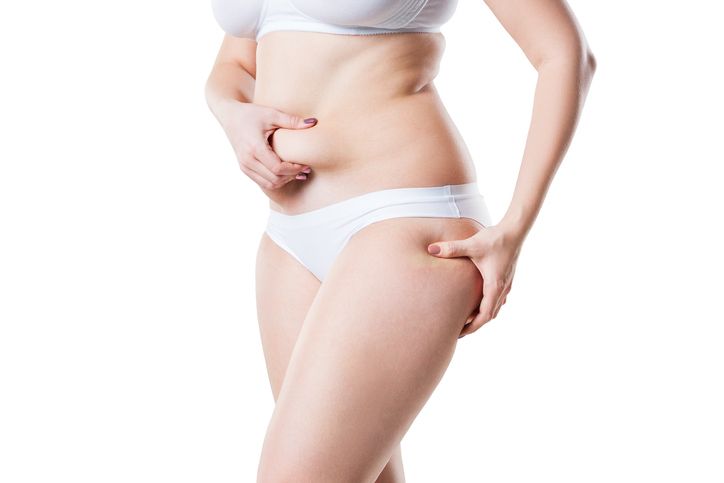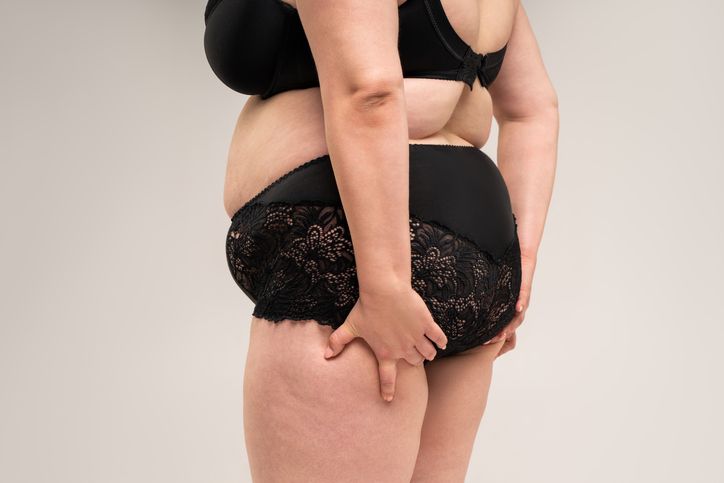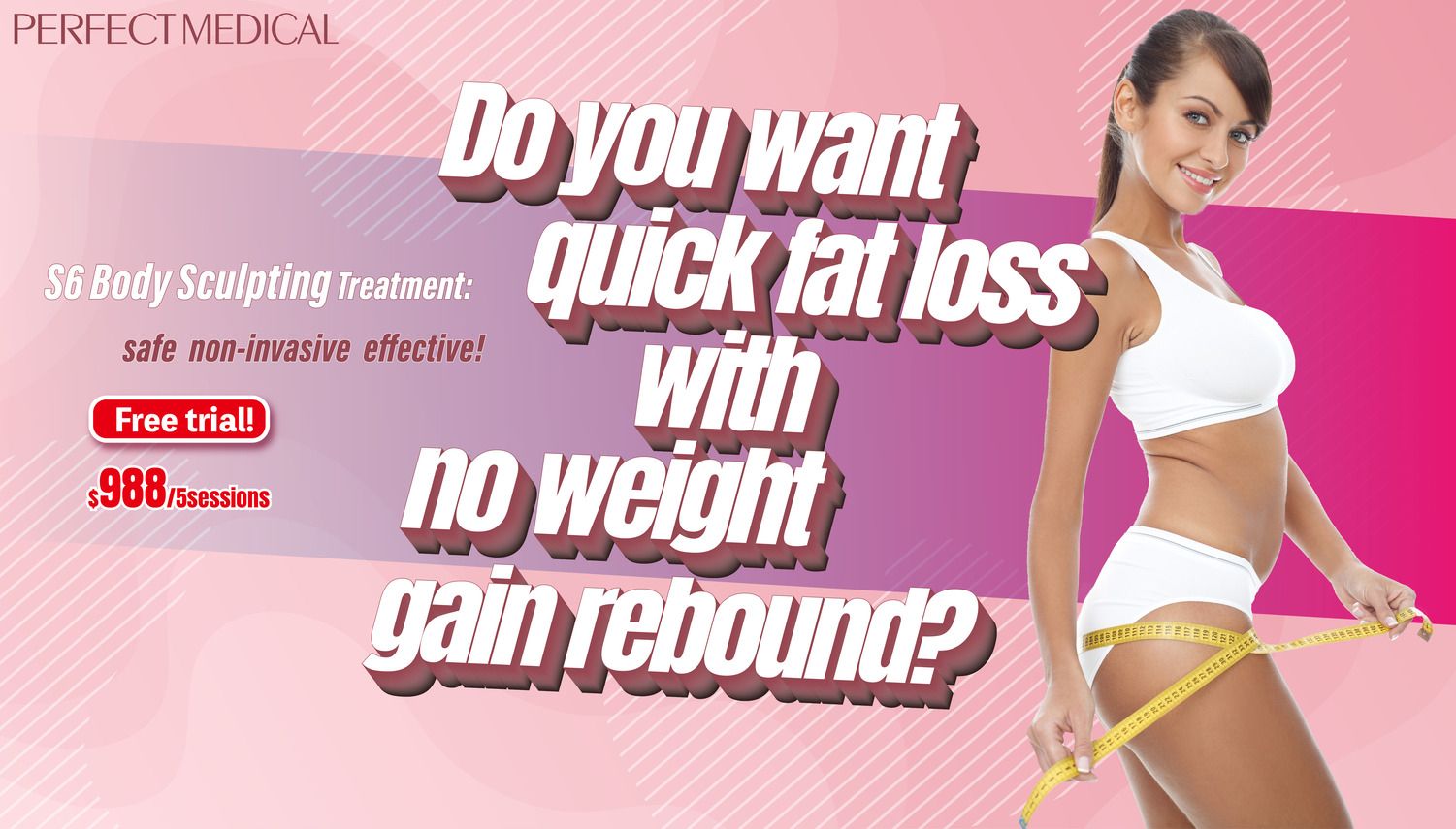- Home
- Trend
- Weight Loss Strategies
- Acne Tips
- Hair Health Information
- Blemish Removal Tips
- Acne Scar Removal Tips
- Muscle Building Techniques
- Intimate Care Tips
- Postpartum Intimate Care
- Eye Bags Wiki
- Tips for Face Slimming
- Secret of Permanent Hair Removal
- Breast Enlargement Tips
- Cure to Snoring
- Marionette Lines
- Skin-Tightening Secrets

免費體驗
S6 Body Sculpting Treatment
1 Minute Self-Registration
Date should not be before minimal date
In a world where body image and health consciousness have taken centre stage, one of the common concerns that many individuals face is excess fat in their thighs. "Fat thighs" is a topic that often garners attention, with people seeking effective ways to address this issue. In this article, we will delve deep into the subject of fat thighs, exploring the causes, health implications, and practical strategies for managing and toning this troublesome area of the body.
1
Definition of Fat Thighs: How to Measure Inner and Outer Thighs

Before we begin our journey toward understanding and addressing fat thighs, let's clarify what we mean by this term. Fat thighs refer to an accumulation of adipose tissue in the thigh region. This excess fat can be visually unpleasant to some and may also pose health risks if left unchecked.
Before we delve into strategies for understanding and managing fat thighs, it's important to establish what we mean by this term. Fat thighs are characterised by the accumulation of adipose or fatty tissue in the thigh region. This surplus fat can not only be aesthetically concerning for some individuals but may also present health concerns if not effectively managed.
One key aspect of addressing fat thighs is accurately measuring them. This measurement can serve as a valuable baseline and help track progress as you work towards your fitness and wellness goals. To measure your fat thighs, follow these steps:
1. Preparation
Before you begin, ensure you have a flexible measuring tape and a mirror to assist in obtaining accurate measurements.
2. Find a flat surface
Stand on a flat surface with your feet hip-width apart. Maintain an upright posture to ensure an even measurement.
3. Identify key points
- Inner Thigh: To measure your inner thigh, locate the highest point of your inner thigh. This is typically where your thigh meets your pelvic region. Mark this point gently with a pen or use a piece of tape to ensure consistency in subsequent measurements.
- Outer Thigh: For the outer thigh measurement, identify the widest part of your thigh. This is often around the midpoint between your hip and knee. Again, mark this point to maintain consistency.
4. Measure
Using the flexible measuring tape, wrap it around your inner thigh or outer thigh, depending on the measurement you are taking. Ensure the tape is snug but not overly tight, maintaining a consistent level of tension. Take note of the measurement in inches or centimetres.
2
How Do I Know If My Inner Thighs or Outer Thighs are Fat?

Defining whether a thigh is considered "fat" based on measurement involves considering factors such as the circumference of the thigh, body composition, and individual goals. Here's how you can make a rough assessment:
1. Thigh Circumference
Measure the circumference of your thigh at the widest point, which is typically around the midpoint between your hip and knee. You'll have the measurement in inches or centimetres.
2. Body Composition
Take into account your overall body composition, including factors like height, weight, and body fat percentage. An individual with a larger frame or more muscle mass may naturally have larger thighs without being considered "fat."
3. Comparison to Healthy Ranges
Compare your thigh circumference measurement to average or healthy ranges for your height and body type. While these ranges can vary, a healthcare provider or fitness professional can provide guidance on what is considered typical for your specific circumstances.
4. Personal Goals
Consider your personal fitness and aesthetic goals. What you consider "fat" may differ from someone else's perspective based on individual preferences and objectives. Some individuals may aim for lean, defined thighs, while others may be content with a different aesthetic.
5. Health Considerations
Remember that the mere presence of fat in the thighs does not necessarily equate to poor health. It's important to assess overall health, including factors like cardiovascular fitness, blood pressure, and cholesterol levels, to determine if there are health concerns associated with thigh fat.
6. Consultation
If you have concerns about your thigh size or overall health, consult with a healthcare provider or fitness professional. They can provide personalised guidance and assessments to help you set realistic goals and create a plan to achieve them.
3
Exploring the Causes of Thigh Fat and Overall Body Fat

1. Genetics and body type
Genetics can significantly influence where your body tends to store fat. Some people inherit genes that predispose them to accumulate excess fat in certain areas, including the thighs. This genetic disposition is often referred to as a "body type."
Different body types, such as ectomorphs, mesomorphs, and endomorphs, have varying tendencies to store fat. Endomorphs, for example, are more likely to store fat in the thigh and hip region. Recognizing your body type can provide insights into your fat distribution patterns.
2. Hormonal changes
Hormonal fluctuations can contribute to fat accumulation in the thigh area. Significant hormonal changes occur during life stages like puberty, pregnancy, and menopause. These changes can affect fat storage and distribution, leading to increased fat in the thighs.
Puberty: Adolescents may experience a redistribution of fat during puberty, often resulting in increased fat in the hips and thighs, particularly in females.
Pregnancy: Pregnancy-related hormonal changes can lead to fat storage in the thighs and hips as the body prepares for childbirth and breastfeeding.
Menopause: Hormonal shifts during menopause can cause fat to be redistributed from the hips and buttocks to the abdomen and thighs.
3. Sedentary lifestyle
A sedentary lifestyle, characterised by prolonged periods of sitting or minimal physical activity, can promote fat storage in various parts of the body, including the thighs. Lack of exercise hinders the body's ability to burn calories and utilise stored fat for energy.
4. Unhealthy diet
Consuming a diet high in calories, saturated fats, sugars, and processed foods can contribute to fat gain throughout the body, including the thighs. Poor dietary choices can lead to excess calorie intake, which the body stores as fat in adipose tissue.
Processed Foods: Processed foods often contain hidden sugars and unhealthy fats, which can lead to weight gain and fat accumulation.
Sugary Drinks: High-sugar beverages like soda can contribute to overall fat gain when consumed regularly.
4
What Would Happen If I Refused to Lose Thigh Fat?

Increased risk of cardiovascular issues
Excess thigh fat can serve as an indicator of obesity, which is associated with an increased risk of cardiovascular issues. Obesity contributes to conditions such as high blood pressure, high cholesterol levels, and a higher likelihood of developing heart disease.
Joint pain and mobility issues
Carrying excess weight in the thighs can place additional strain on the knees and hips. Over time, this can lead to joint pain and reduced mobility, making everyday activities more challenging. Reduced mobility and joint discomfort can impact overall quality of life, limiting physical activities and affecting long-term joint health.
Understanding the causes of thigh fat and their health implications is a crucial step in making informed decisions about lifestyle changes, including diet and exercise, to manage and reduce thigh fat while promoting overall health and well-being.

免費體驗
S6 Body Sculpting Treatment
1 Minute Self-Registration
Date should not be before minimal date
5
Food Strategies for Managing Fat Thighs and Lose Fat at the Same Time

Achieving toned and healthy thighs involves more than just exercise; it also requires careful attention to your diet. Here are some dietary tips to help you manage fat accumulation in the thighs:
1. Embrace a balanced diet
A balanced diet is like the foundation of a well-structured building; it provides the essential support for your overall health and fitness goals. Imagine your daily meals as a canvas where you paint a picture of variety and nutrition. Here, balance means incorporating a mix of lean proteins, whole grains, and colourful fruits and vegetables into your daily meals. For example, breakfast could consist of a vegetable omelette with whole-grain toast, and dinner might feature grilled chicken breast with quinoa and steamed broccoli. This balance ensures you get a spectrum of nutrients while managing calorie intake.
2. Prioritise lean proteins
Lean proteins are your body's best friend when it comes to fat reduction and muscle maintenance. Think of them as the building blocks for a leaner you. Incorporate these into your meals: skinless poultry, lean cuts of beef or pork, fish, tofu, legumes, and low-fat dairy products. Picture a flavorful salmon fillet for dinner, providing you with protein to fuel your muscles and keep you feeling full, all while working towards those toned thighs.
3. Load up on fruits and vegetables
Fruits and vegetables are like nature's multivitamins, and they should have a prominent place on your plate. Envision a vibrant salad filled with leafy greens, colourful bell peppers, and juicy tomatoes. These foods are packed with essential vitamins, minerals, and fibre while being naturally low in calories. They act as your allies in controlling hunger and cravings, helping you avoid overindulging in high-calorie options.
4. Opt for whole grains
Whole grains are the sturdy foundation of your diet. Visualise a hearty bowl of oatmeal for breakfast or a serving of quinoa with roasted vegetables for lunch. These whole grains offer complex carbohydrates and fibre that provide lasting energy while promoting a sense of fullness. They're like the slow-burning fuel that keeps your body running efficiently.
5. Watch portion sizes
Portion control is like the conductor of a symphony, ensuring that your meals are harmonious and balanced. Picture using a smaller plate for your meals, which naturally limits portion sizes. Imagine measuring out a single serving of pasta, helping you avoid unintentional overeating. Eating slowly and savouring each bite allows your brain to catch up with your stomach, preventing the feeling of being overly full.
6. Stay hydrated
Hydration is the elixir of life, and it plays a crucial role in your dietary success. Picture yourself sipping water throughout the day, staying hydrated and feeling refreshed. Adequate hydration can help control appetite, as thirst can often be mistaken for hunger. Imagine a reusable water bottle as your constant companion, reminding you to drink and stay on track with your calorie goals.
7. Limit sugary and processed foods
Sugary and processed foods are like tempting pitfalls on your journey to toned thighs. Visualise reducing your intake of sugary snacks and beverages, such as sugary cereals or soda, which can contribute to weight gain. Similarly, see yourself making informed choices by avoiding processed foods high in unhealthy fats, sugars, and sodium. Instead, opt for fresh and whole food options that nurture your body.
8. Healthy snacking
Healthy snacking is your secret weapon against unhealthy cravings. Imagine reaching for a handful of nutrient-packed nuts or a yoghourt parfait with fresh fruit when the afternoon hunger strikes. These smart choices keep your metabolism active and prevent the temptation of empty-calorie snacks. Also, avoid reaching for high-calorie, low-nutrient snacks so it helps you in losing weight.
9. Monitor total caloric intake
Tracking your daily caloric intake is akin to budgeting your finances. Creating a calorie deficit—burning more calories through exercise than you consume through food—is your path to overall fat reduction. Imagine a fitness app or journal as your calorie accountant, helping you stay on top of your goals.
Remember that spot reduction, where you specifically target fat loss in one area like the thighs, is challenging. Instead, focus on overall body fat reduction through a combination of a balanced diet, regular physical activity, and a healthy lifestyle. Specific exercises like leg lifts, inner thigh squeezes, and plié squats can also help tone and firm your thigh muscles.
6
Too Lazy to Burn Fat by Watching Calories? Achieving Toned Thighs with Perfect Medical Instead

But if losing thigh fat in a longer period of time is not what you are looking for, taking non-invasive body contouring treatments may be an option. Introducing the Perfect Medical S6 Body Sculpting Treatment, an innovative solution for eliminating fat without invasive procedures. This cutting-edge approach combines advanced bio-laser technology with vacuum suction technology to target and reshape seven challenging areas of the body: the waist, abdomen, arms, thighs, calves, above the knees, and lower hips. Here's how it works:
1. Fat dissolving with bio-lasers
The treatment employs state-of-the-art bio-laser technology to stimulate fat cells in these stubborn areas. This stimulation triggers the breakdown of fat cells, releasing stored fatty acids.
2. Lymphatic drainage enhancement
To ensure efficient removal of these liberated fatty acids, vacuum suction technology is utilised. This technique promotes lymphatic drainage, facilitating the elimination of fatty acids from the body.
The result? A beautifully sculpted body shape that aligns with your desired appearance, achieved through a non-invasive and effective approach. Perfect Medical's S6 Body Sculpting Treatment offers a safe and advanced solution for those looking to enhance their body contours without the need for surgical intervention.
7
Conclusion

In conclusion, fat thighs can be a common concern, but they are manageable with the right approach. Understanding the causes, recognizing the health implications, and implementing effective strategies can help you achieve the toned thighs and healthy weight you desire. Remember that a balanced lifestyle, including a healthy diet and regular exercise, is key to long-term success in managing fat thighs.

免費體驗
S6 Body Sculpting Treatment
1 Minute Self-Registration
Date should not be before minimal date
FAQ

1. Is high intensity interval training effective for losing thigh fat?
It is possible that high-intensity interval training (HIIT) can aid in reducing thigh fat, but it depends on various factors, including your overall fitness level, diet, and consistency. HIIT is known for its calorie-burning potential and its ability to target fat, but spot reduction (losing fat from a specific area) is challenging. HIIT can help reduce overall body fat, including thighs, when combined with a well-rounded fitness routine.
2. How long does it take to see results in thigh fat reduction through cardio exercises?
Results in thigh fat reduction from cardio exercises can vary significantly among individuals. However, with consistent exercise and a balanced diet, you may start noticing changes in a few weeks to a few months. It's crucial to maintain patience and stay committed to your fitness and dietary goals for lasting results.
3. What is the difference between having big leg muscles and having fat thighs?
The difference between having well-developed leg muscles and having fat thighs lies in their composition. Big leg muscles typically result from strength training and muscle growth, giving your legs a toned and defined appearance. On the other hand, fat thighs refer to excess adipose tissue or fat stored in the thigh area, which can make the thighs appear larger and less defined. Muscle and fat are distinct components, and the visual difference between them is evident in the appearance and texture of the legs.
4. Why does fat accumulation often occur in the thigh area?
Fat accumulation in the thigh area is common because the thighs are a primary storage site for adipose tissue, particularly in some individuals. Genetics, hormones, and overall body composition can influence the propensity for fat to accumulate in this region. Additionally, factors like diet, exercise, and lifestyle play a role in the distribution of fat in the body.
5. Why is the S6 body sculpting treatment considered better than liposuction?
Liposuction can provide immediate fat reduction results, but it is an invasive surgical procedure with associated risks and downtime. The S6 body sculpting treatment, on the other hand, is non-invasive and utilises advanced technologies like bio-lasers and vacuum suction to target and reduce fat without surgery. While results may take some time to become fully evident, the non-invasive nature of the S6 treatment often appeals to individuals seeking a safer and less invasive approach to body contouring. The choice between the two depends on individual preferences and goals.








